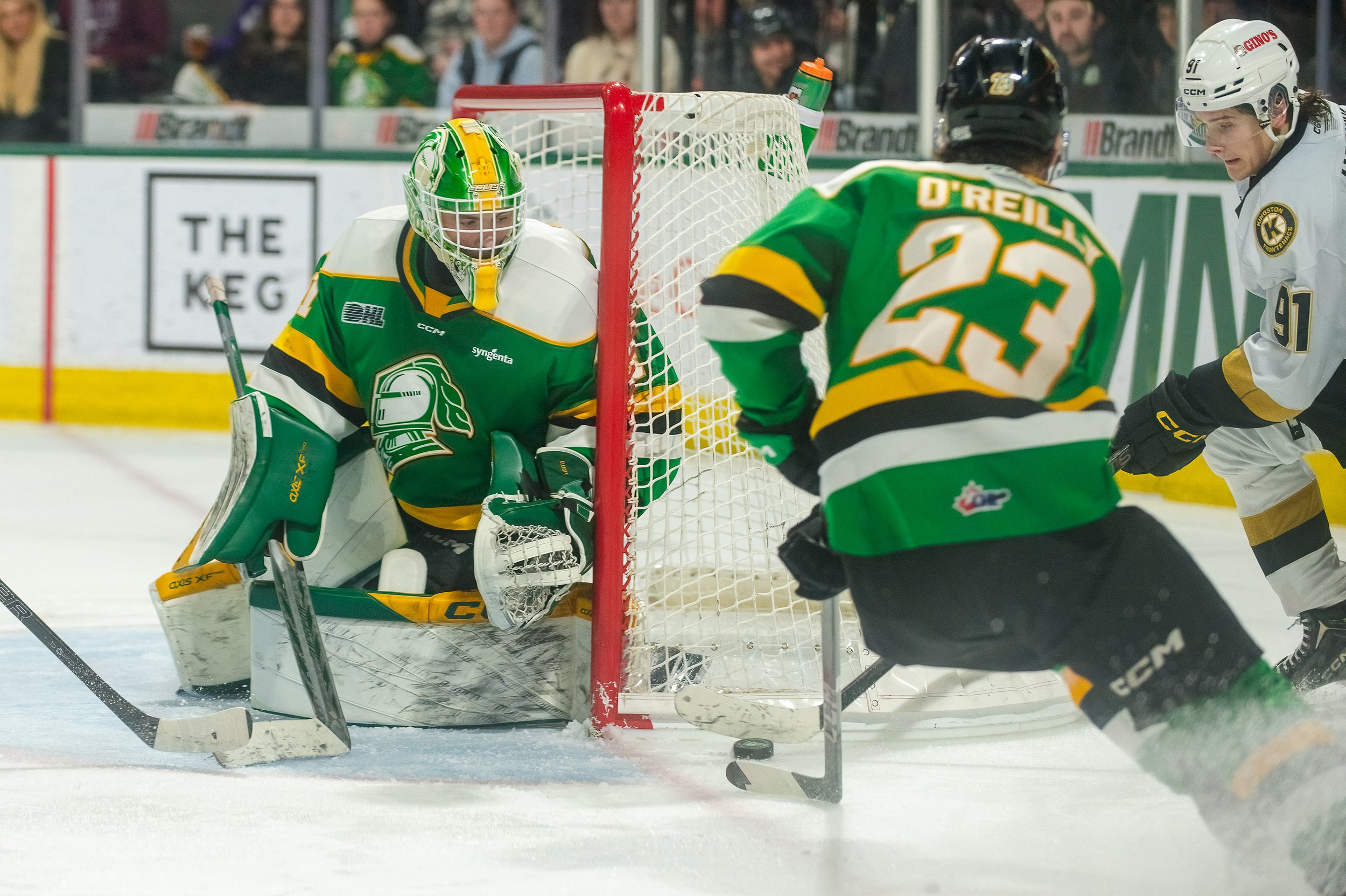Staehli hopes Tokyo just a taste of what’s to come
With her Tokyo Olympic experience still fresh, Julie-Anne Staehli is already eyeing Paris 2024. The distance runner’s dreams are just beginning.
Staehli, shown here at this year’s Canadian Trials, shattered her previous personal bests this season and earned a spot in the 5000m event at the Tokyo Games.
The hardest part was knowing she wouldn’t be walking back into that stadium.
One night, one race was not enough.
But while Julie-Anne Staehli’s Olympic debut, in the women’s 5000m, may not have ended as planned, her journey to the Tokyo Games has opened the door to an exciting future – one that may culminate in another chance, in another stadium, on her sport’s biggest stage.
* * *
Staehli has been one of the country’s elite runners for almost a decade.
A five-time All-Canadian at Queen’s University, the Lucknow, Ont., native made her international debut at the 2014 U23 NACAC Championships where she won bronze in the 3000m steeplechase. From 2013-15, she won a silver and two bronze medals in the same event at the Canadian Championships. And in 2017, she competed at the World Cross Country Championships.
In 2020, Staehli ran the second-fastest indoor 3000m ever by a Canadian woman, breaking through the nine-minute barrier for the first time. In February of that year, she established a personal best of 8:47.73.
Heading into the 2021 outdoor season, Staehli had never broken the 16-minute mark in the 5000m. By May, she had lowered her personal best to 14:57.50, putting her under the Olympic entry standard in the event.
On July 3, Julie-Anne Staehli was named to Team Canada. She was going to Tokyo.
“All of a sudden there was all this emotion,” the Londoner said of the announcement. “Day after day thinking about this for so long and being so excited, building it up in my mind, and then it finally being announced, being a reality, it was both a big relief and totally exciting.”
Soon after, Staehli joined her teammates in Flagstaff, Ariz., where they spent two weeks training in altitude and heat. From there, they traveled to Gifu, a city in central Japan five hours outside Tokyo where Team Canada established a staging camp to acclimate athletes to the time change and the heat.
She arrived in the Olympic Village five days prior to her race.
“I can only speak highly of everything Japan had to offer. The organization, the people, just the kindness and graciousness of everyone,” Staehli said. “It is phenomenal, especially being a Canadian, where we’re usually seen as being these nice and welcoming people, it was a different level of respect. It was such a neat environment. It’s a once-in-a-lifetime – well, hopefully, twice-in-a-lifetime – experience for me.”
While pandemic precautions limited many interactions, she still got to know her Team Canada teammates and roommates and mingled a bit with the world in dining halls. But life was more subdued than previous Games. Her only sightseeing, for instance, was glimpses of the passing countryside out the window of a bus shuttling athletes between the village and the stadium.
No matter. This was no vacation – it was a work trip.
“The situation actually allowed me to focus a little bit more on performance,” Staehli said. “I would have been overwhelmed, especially for my first Games, if everything was open and we were allowed to travel, go to restaurants and cafes, see the sights.”
* * *
Her teammates told her that memories of the race itself would fade – that it would be in those moments beforehand when Olympic memories would be sealed. So Staehli took it all in walking into Olympic Stadium on race day.
“The stadium was completely lit up with that halo top opening,” she said. “It looked like Times Square how illuminated everything was. Just so bright and shiny. I’ve never run in a stadium like that. I’ve never run in a closed stadium. It was one of the most intimidating, but also one of the most exciting places to run.”
Staehli had seen the heat sheet – the roster of the athletes she would be stacked up against. She knew their names, their times, their season’s best. It was brutal lineup. But there are no easy outs in the Olympics.
“Technically, they were in a whole other league, but you need to go into the race thinking you know these are just people. You are not racing names. You can’t fixate too much on performances. You have to go in and approach it like any other race.”
Oppressive heat and humidity have blanketed Tokyo during the Games. In Olympic Stadium, trackside thermometers have blown past 40 degrees C in the direct sun. Couple that with humidity that rarely dips below 60% and you have a repressive environment for the hundreds of volunteers to stand in – let alone to run and compete in at the highest level.
At 7 p.m. on Friday, July 30, thermometers read 30 degrees C with 80% humidity when the women’s 5000m was scheduled to start.
It had rained earlier in the day. Staehli thought that might work to her advantage by clearing the air a bit, but it ended up being far worse. The saturated ground heated up and created a rising moisture barrier.
She tried not to think about it. But that was difficult when you are soaked in sweat almost the moment you start warming up. Spend anything over 10 minutes in that kind of heat and your performance suffers. Everything slows down.
Some handle the heat. Others try and train for it, as Team Canada did in Arizona. But that was a dry heat. Tokyo heat hangs on you like a sweaty, exhausted toddler.
“It is sort of mind over matter,” said Staehli, who had previously run cross-country in the heat of Uganda and Venezuela. “You can’t deny it. It all comes down to your body’s ability to cool itself. If you can’t dissipate the heat quick enough, you’re going to overcook. I have experience in heat, and it hasn’t always gone well.
“No excuses. Everyone was under the same conditions. But you cannot underestimate the impact.”
For her debut Olympic race, she planned to counter the heat by being a bit conservative at the start. Sit back. Let the heat pick off a few competitors. Then make a move.
She assumed the field would go out slower, which didn’t really happen. She was waiting for athletes to fall off, ‘a war of attrition,’ if you will. But that didn’t happen either.
She thought 15:15 would take the race.
Unfortunately, the race was one of the fastest semis in Olympic history.
“I did not think it would be that fast with those conditions,” Staehli said. “That was tough. Leading in, I felt as good as I have before any other race. I’m used to racing at night. That was fine. But I noticed, once it was about halfway through, with seven laps to go, I just wasn’t as comfortable as I usually am. At 3K, I was at 9:07, so I knew I wasn’t on any sort of record pace. It was definitely one of the hardest five-thousands I’ve run this season.”
She finished in 15:33.39, landing her 17th in her heat, behind the winner and eventual gold medalist Sifan Hassan of The Netherlands. Beyond Hassan, arguably the finest runner in the world, there were three personal bests, three seasons bests and two national records established by runners ahead of Staehli in that one race. Like we said, it was a brutal lineup.
“It was tough. I wanted to be in the race. That’s the hardest part. When you’re off the back and you don’t have that same contact with the field, that’s when things get hard. I just wanted to make sure when I stepped off the track that I would be proud of the race I ran,” said Staehli, whose time did not qualify her to move on.
“It was not my best performance, but it was the best that I had on that day. Walking away from that race and that finish line, heading to the media zone and then off from the stadium, I just thought I wanted more time. I was walking away from that track knowing I wasn’t going be back, and that was really hard to close the season off like that.”
* * *
Now, Julie-Anne Staehli is going to find that time.
Until now, her life has been a balancing act as a student-athlete – athletics, school, running, life. A recent education grad from Western University, she is going to put her teaching career on hold. She is running towards Paris 2024.
“I am going to give myself a three-year window. I am willing to carve out that time and just see how far I can take it,” said the 27-year-old. “A lot of people never think about running as a profession like they do other professional sports. It’s usually just your MLB, NBA, NHL. For me, this is exciting. Running is a relatively short-term, timely thing. I can teach for many years down the road, but I’m likely not going to be running at this level when I’m in my 40s or 50s.”
Staehli recognizes how unique, how special this opportunity is. Tokyo 2021 was not the end of the dream – it was just the start.
“Just having the opportunity, having Canada across my chest and representing more than just myself, it was incredible. Going in, I knew what to expect from the competition. But the experience was a lot more emotional than physical. I’m still riding high. Some people say it takes a couple months before you come back down and realize, ‘Wow, that happened and now I’m back up,’” Staehli said.
“I’ve learned so many things. I really hope that I have another opportunity to be able to compete at that level.”













Knight Watch: After sweeping Owen Sound, London takes on the No. 5 Erie Otters in the second round of the OHL playoffs; Columnist Jake Jeffrey previews the matchup — and predicts the rest of the OHL series …